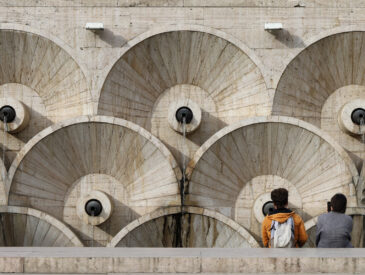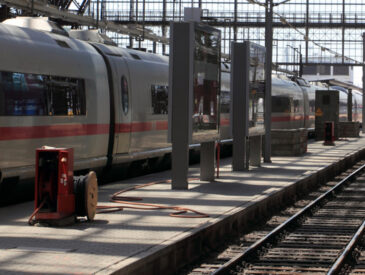
Mt. Etna is one of the must-see attractions on Sicily, but from Taormina you’ll want to dedicate a full day to a visit. Since we didn’t have too many of those in our schedule, we picked the one with the best weather forecast and thus booked onto the Etna Sud e Alcantara version from Etna Trasporti, oblivious to what the ‘Alcantara’ part meant!
Purchasing at the Interbus travel shop, tickets came in two flavours; a basic at €34 or an ‘all-in’ for €92. In fact, the options are more complicated than that… the cheapest option just covers coach transport to and from Etna (via Alcantara on the return). That gets you to Rifugio Sapienza on Etna’s southern face – just shy of 2000m above sea level – since that’s where the road runs out. From there, a cable-car can lift you to 2500m, in exchange for €30; another €33 adds 300m via a ‘jeep’ (more of an offroad bus). The ‘all-in’ deal is therefore a saving if you want to get as high as possible, plus you get to skip the queue for purchasing cable-car tickets and have a guide once at 2800m. But we didn’t particularly want to be locked to the same group for an eight hour day, and so decided to go à la carte instead of all-you-can-eat.
Departure was at 8am from Taormina’s bus station, which is not particularly central but fairly easy to find. (It’s also where airport services operate from, although obviously we hadn’t used those given our more complex journey to Sicily!) Our guide turned out to be (at least) quad-lingual, with the main announcements made in both English and German, and top-ups in Italian and Russian for a few other guests. In the first half an hour or so we collected guests from around Taormina and Giardini; but that also gave us an opportunity to check out the site of an ancient lava flow that made it all the way to the sea. Once everyone was aboard, we turned inland, although with plenty of great views back to Taormina and across to the mainland as we slowly gained height. Weaving up switchback roads, the landscape evolved from grasslands to rockier terrain. About a kilometre from our destination we passed above the tree line, with only hardy mosses and powdery gravel in place of the earlier patches of purple and yellow flowers. We reached the parking spot at 9:45, where those on the full programme headed straight for the cable-car, whilst the rest of us were free to fill the next four hours as we saw fit.
As a starter, therefore, we backtracked along the roads to the Silvestri craters – formed in the late 19th century, these are now inactive, but still look the part and offer some great views. According to our guide, today was unusually clear and indeed we could see all the way to the coast. There’s an easy path around the edge of the craters, but you don’t have to stray far to find yourself in much more demanding loose gravel. After some light exploring we therefore returned to the Refuge.
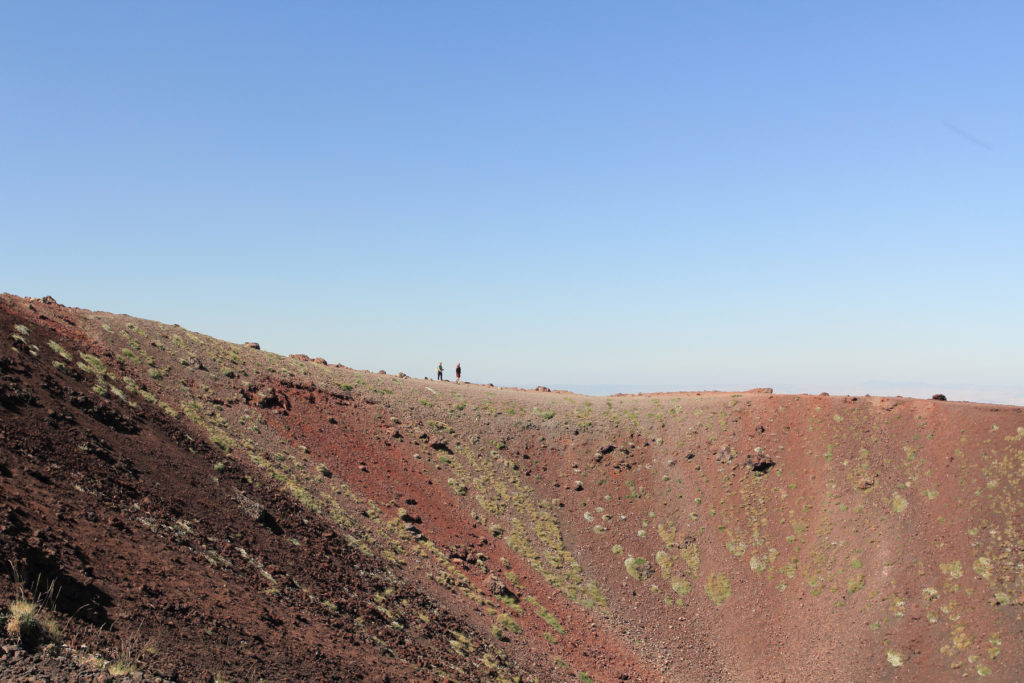
Having only spent an hour or so at the craters, there was plenty of time to savour the main course; we decided to take the cable-car up, but then explore by foot rather than use the jeeps. Purchasing a ticket was easy, but boarding is more chaotic; for some reason a lot of people choose to hang around the queuing area but aren’t actually trying to queue, so you have to be quite pro-active… The cars have capacity for six, but we only had one companion in ours, a visitor from Germany who was on a walking holiday and seemed rather more committed to the ascent ahead! Our short journey passed in pleasant conversation as we exchanged travel tales; it’s a reassuringly smooth ride and never alarmingly high.
We’d been warned by the tour guide that temperatures at altitude would be in the 10-15°C range (versus 30-32 in Taormina that day) and thus the hire of coats, socks and sturdier shoes was recommended (at €3 each, although you can keep the socks). Whilst notably cooler at the upper station, where these items could be obtained, we felt no need for them; if you choose to walk, you’ll soon be more than warm enough!
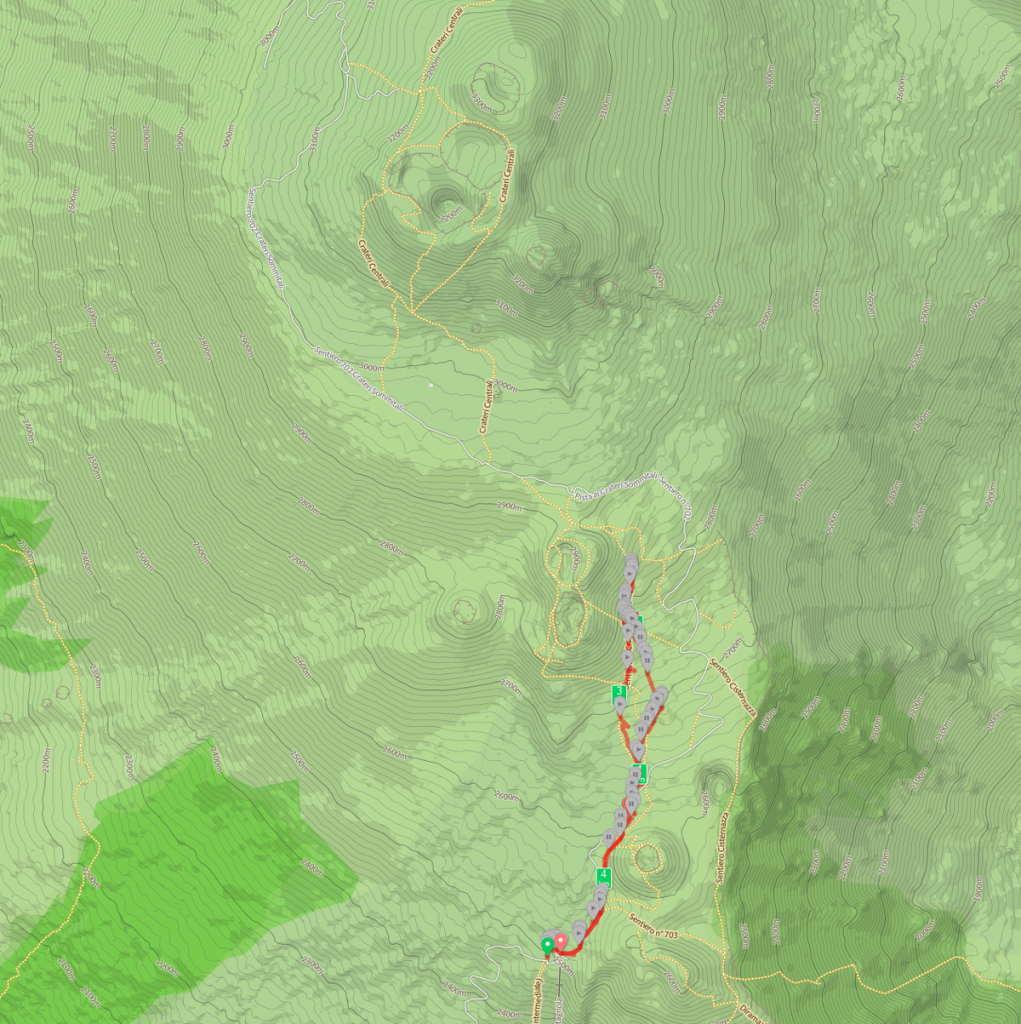
And walk we did: the capture above gives a rough idea of our route, and more obviously how often we stopped for a break. I would claim these were just to take photos, but in reality water and a few extra breaths were usually the motive. It took us most of an hour to cover less than 2.5km – although we gained 300m of altitude, cracking the 2800m mark before accepting we’d have to turn back to make the coach departure. We were definitely jealous at times of the trucks roaring past in clouds of dust, but I’m glad of our more hard-earned experience and feel that our slower ascent better captured the changing environment than being whisked straight to the top. Often, it felt like we were exploring another planet…
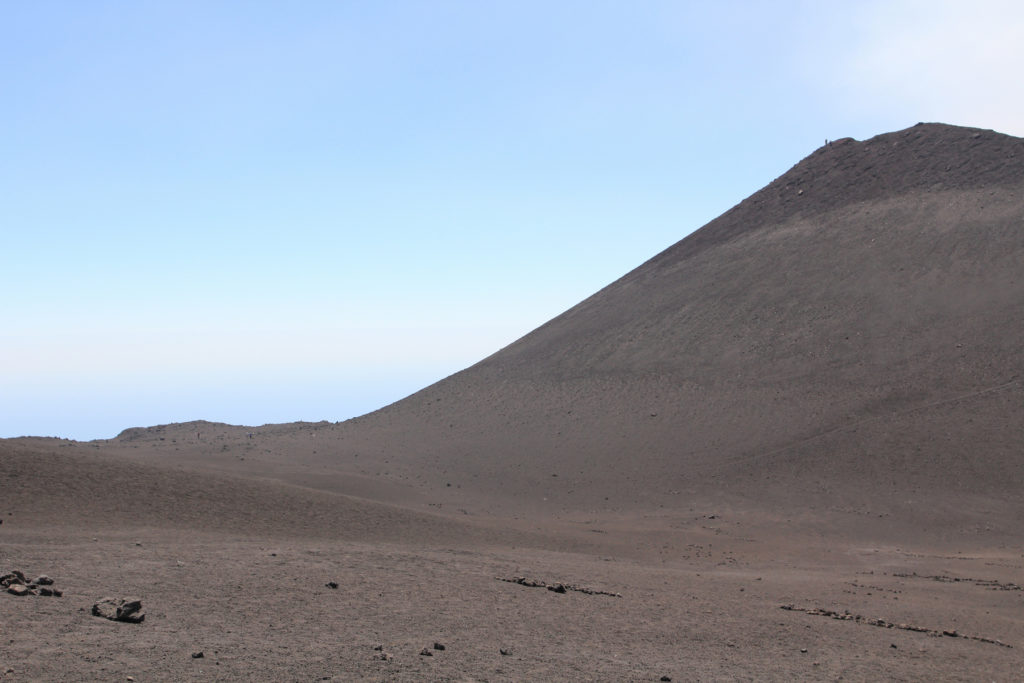
Besides, even the trucks can only go so far; Etna tops out a good half a kilometre higher, around 3350m. If we return, I’m tempted to take the even more expensive option we were offered: a helicopter tour!
Most Etna tours add a side-attraction, often a souvenir shopping opportunity – wine and honey being common choices, it seems. Ours however broke up the return drive by adding a second sightseeing stop, the Alcantara gorge. This was completely off our radar, and we didn’t do any research after booking either, so it was a complete surprise – a good way to first encounter it, which I shall now spoil…
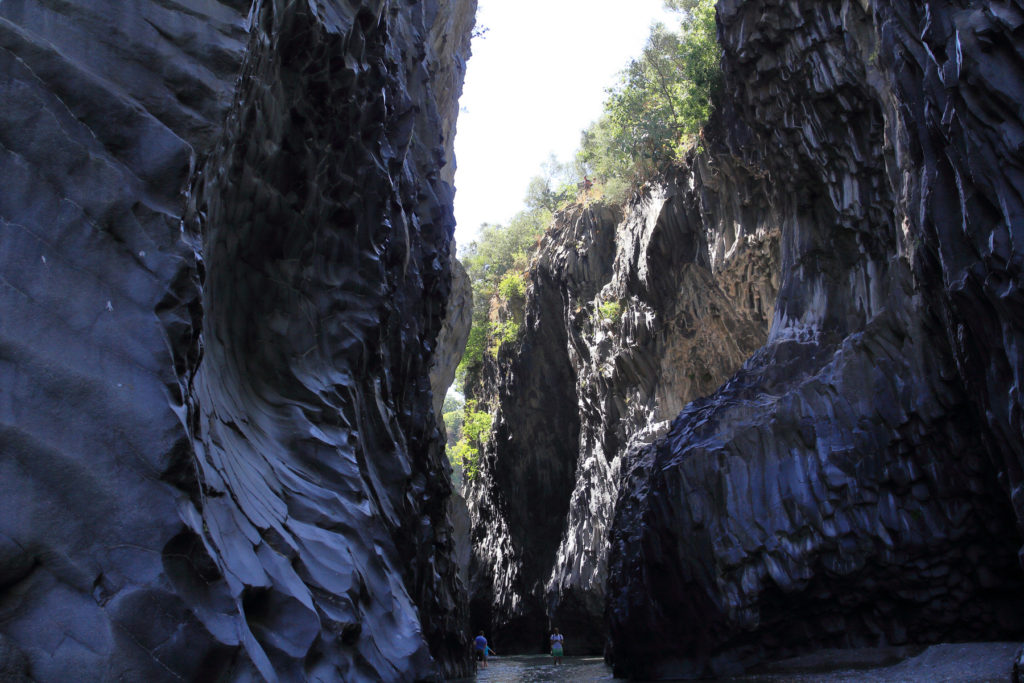
Its dramatic rock formations were created when a lava flow from Etna rapidly cooled on contact with the Alcantara river. Over the ages the rushing waters then steadily eroded away at the lava columns, forming the gorge. The river still flows through the resulting valley, but these days is barely knee deep, crystal clear, and ice-cold. Had I known where we were going, I’d have brought something more suitable than my hiking gear… but with boots discarded and trousers rolled up, I was still able to wade in and get some relief from the Sicilian summer heat. A refreshing dessert to conclude our three courses of Etna!
Photos
Here’s a few more photos from each of our ‘courses’.
































